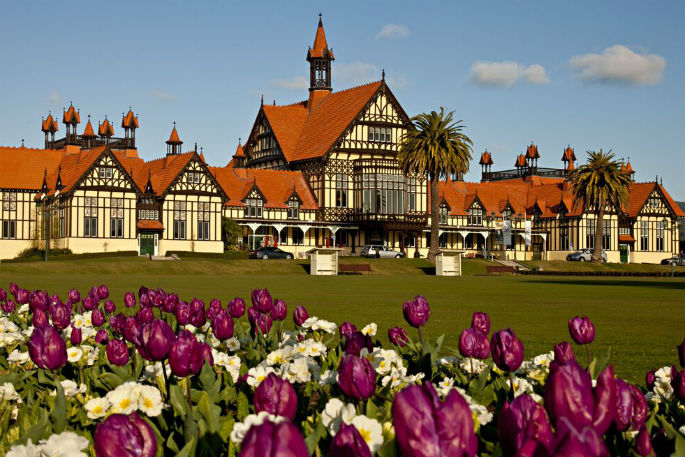The Rotorua Museum closed after damage the Kaikoura earthquake was discovered on November 18, 2016, will remain closed for the foreseeable future.
The investigation of the cracks that showed after the earthquake has revealed a building seriously earthquake prone and it will need substantial work before it can again be opened to the public.
Repairs are needed to the roof, there is substantial timber and joint deterioration and there are internal pumice walls which have no steel reinforcement and would be seriously compromised by certain movement.
'We now have a clear understanding of what state the building is in,” says Rotorua Lakes Council Chief Financial Officer Thomas Collé.
'That means we can start working with our engineers, architects and Heritage New Zealand to understand what our options are, consider the work involved and the estimated cost of each option to bring back to Council for its consideration and a decision. That will take several months.”
'The good news is that it can be fixed. How that happens, how long it will take and how much it will cost now needs to be determined,” says Rotorua Mayor Steve Chadwick.
While the closure of the much-loved museum building is devastating for the community and for Rotorua Lakes Council, public safety is the priority.
'The wait for the results of the detailed assessment has been frustrating for us all, but it has been necessary to ensure we have a clear picture of what we're faced with. We will now need to consider the options for both the building and the future of our museum services and make a decision about how to proceed.
'It is sad to see her closed but our iconic museum and Government Gardens remain popular and our wonderful museum staff and volunteers continue to provide events, tours and education programmes.
'They're an incredibly passionate and positive bunch and we're all very proud of how they have embraced the concept of a museum ‘outside the walls'.”
The Detailed Seismic Assessment report was received by Council this week in confidential to enable councillors to speak with stakeholders and museum staff before going public.
In the meantime, museum staff will continue to run events, says council's arts and culture director Stewart Brown.
'It's too early to speculate about what the operational or business side of things will look like in the future,” says Stewart.
'We will be working through that during the coming months.
'Taonga in all but the Te Arawa collection area - excluding some of the marble summers sculptures, which we'll have removed soon - were moved out and into storage some time ago. The majority of taonga in the Nga Pumanawa O Te Arawa exhibition are located in the part of the building assessed at 80 per cent, so are safe. We are working with iwi, Te Papa, Auckland Museum and other lenders on a plan for the ongoing care of the few remaining taonga that need relocating.”
Council set aside $500,000 this financial year (2017/18) for ongoing work related to the museum. The closure has resulted in an estimated $1.5m in lost revenue. The closure occurred just before the start of the annual busy season.
During the next two weeks during the school holidays there are free drop-in crafts sessions at Te Runanga Tea House. The museum's education programmes and daily ‘outside the walls' guided tours will continue and the Rotorua Museum Art Awards will be hosted at the Sir Howard Morrison Performing Arts Centre from September 9 to October 6 2017.
The museum building is a Category 1 heritage building which is more than 100 years old and was originally a bath house, which was built in 1908.
There are now cracks down walls on the ground floor of the old part of the museum. Some cracks run from the ceiling to the floor and continue along the floor.
Twenty staff were affected by the initial closure and were given the option of taking redundancy.
Many were placed within other divisions within Council where there were vacancies and others were employed by local tourism operators who offered their assistance.
A core group of staff were retained to continue providing events, education and holiday programmes and other museum services.



0 comments
Leave a Comment
You must be logged in to make a comment.